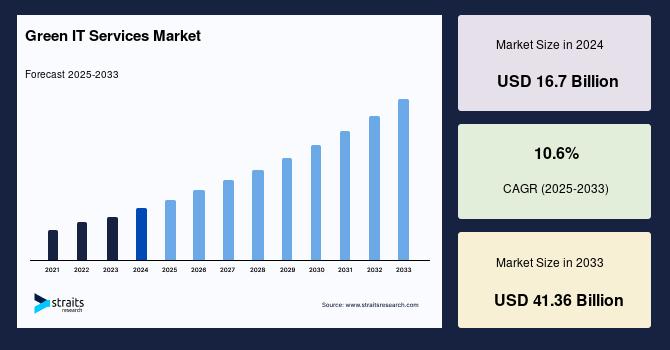Energy Efficiency Improvement Grant – WHIZ – Fox 5 / Marquee Broadcasting – WHIZ

Report on Muskingum County’s Initiative to Enhance Energy Efficiency through State Grant
Introduction
Muskingum County, Zanesville, Ohio, is taking significant steps towards sustainable development by pursuing a State of Ohio grant aimed at improving energy efficiency in local government facilities. This initiative aligns with the United Nations Sustainable Development Goals (SDGs), particularly SDG 7 (Affordable and Clean Energy), SDG 11 (Sustainable Cities and Communities), and SDG 13 (Climate Action).
Grant Overview and Objectives
The grant, announced by the State of Ohio, provides funding to local governments to upgrade energy systems within their facilities. The focus areas include:
- Heating, Ventilation, and Air Conditioning (HVAC) systems
- Lighting improvements
- Window replacements
The goal is to enhance energy efficiency, reduce operational costs, and contribute to environmental sustainability.
Process and Timeline
- The grant application window opens in September and remains open for 90 days.
- Local governments are encouraged to conduct energy audits on their infrastructure.
- Energy audits are performed by state-appointed contracting firms specific to each region.
- Audit results must demonstrate a minimum of 15% energy savings to qualify for the grant.
Benefits and Strategic Importance
- Cost Reduction: Upgrading outdated systems, many of which are original installations, will lower energy expenses over time.
- Environmental Impact: Energy-efficient upgrades contribute to reducing carbon emissions, supporting SDG 13 (Climate Action).
- Community Well-being: Improved infrastructure promotes sustainable cities and communities, in line with SDG 11.
- Financial Efficiency: Securing the grant ensures that improvements can be made at no cost to the county or taxpayers, supporting responsible resource management.
Statements from Officials
Kyle Dunn, Muskingum County Community Development Director, emphasized the county’s commitment to sustainability and cost efficiency:
“We found out there was some funding available to update our energy systems in the county. Whether that be HVAC, lighting, or windows, there’s funding available for government entities to make buildings and systems more efficient. We are currently taking the first steps to pursue this opportunity.”
“We are always trying to reduce costs for the county. Many of our systems are original and due for replacement. If we can install new systems at no cost through the grant, we are certainly interested in applying and getting it done.”
Conclusion
Muskingum County’s proactive approach to securing the State of Ohio’s energy efficiency grant demonstrates a strong commitment to sustainable development and fiscal responsibility. By aligning with key Sustainable Development Goals, the county is setting a precedent for environmentally conscious governance and community resilience.
1. Sustainable Development Goals (SDGs) Addressed or Connected
-
SDG 7: Affordable and Clean Energy
The article discusses a grant aimed at improving energy efficiency in local government facilities, which directly relates to ensuring access to affordable, reliable, sustainable, and modern energy.
-
SDG 11: Sustainable Cities and Communities
By upgrading infrastructure such as HVAC, lighting, and windows in public buildings, the initiative supports making cities and human settlements inclusive, safe, resilient, and sustainable.
-
SDG 13: Climate Action
Energy efficiency improvements contribute to reducing greenhouse gas emissions, thereby supporting efforts to combat climate change and its impacts.
-
SDG 12: Responsible Consumption and Production
The focus on reducing energy consumption and improving efficiency aligns with sustainable consumption and production patterns.
2. Specific Targets Under Those SDGs Identified
-
SDG 7 Targets
- Target 7.3: By 2030, double the global rate of improvement in energy efficiency.
-
SDG 11 Targets
- Target 11.6: By 2030, reduce the adverse per capita environmental impact of cities, including by paying special attention to air quality and municipal and other waste management.
-
SDG 13 Targets
- Target 13.2: Integrate climate change measures into national policies, strategies, and planning.
-
SDG 12 Targets
- Target 12.2: By 2030, achieve the sustainable management and efficient use of natural resources.
3. Indicators Mentioned or Implied to Measure Progress
-
Energy Savings Percentage
The article mentions that energy audits must demonstrate at least a 15% reduction in energy use for the project to qualify for the grant. This implies the use of an indicator measuring the percentage reduction in energy consumption in government buildings.
-
Cost Savings on Energy
Although not quantified, the article implies tracking cost reductions in energy expenses as a measure of progress.
-
Number of Buildings Upgraded
Implied by the grant’s focus on infrastructure improvements, tracking the number of government buildings that receive energy-efficient upgrades can serve as an indicator.
4. Table of SDGs, Targets, and Indicators
| SDGs | Targets | Indicators |
|---|---|---|
| SDG 7: Affordable and Clean Energy | Target 7.3: Double the global rate of improvement in energy efficiency by 2030. | Percentage reduction in energy consumption (minimum 15% reduction as per energy audits). |
| SDG 11: Sustainable Cities and Communities | Target 11.6: Reduce the adverse environmental impact of cities by 2030. | Number of government buildings upgraded with energy-efficient systems. |
| SDG 13: Climate Action | Target 13.2: Integrate climate change measures into policies and planning. | Energy savings contributing to reduced greenhouse gas emissions (implied). |
| SDG 12: Responsible Consumption and Production | Target 12.2: Achieve sustainable management and efficient use of natural resources by 2030. | Cost savings on energy consumption (implied). |
Source: whiznews.com

What is Your Reaction?
 Like
0
Like
0
 Dislike
0
Dislike
0
 Love
0
Love
0
 Funny
0
Funny
0
 Angry
0
Angry
0
 Sad
0
Sad
0
 Wow
0
Wow
0















































































